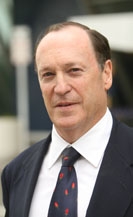Steven Brill Wins March Sidney for TIME article Explaining the High Cost of Medical Bills
Steven Brill wins the March Sidney Award for his TIME feature, Bitter Pill: Why Medical Bills Are Killing Us.
The 24,105-word feature, the longest the magazine has ever published, explains the bewildering world of hospital billing. Brill spent seven months decoding the medical bills of real patients in an attempt to understand what Americans get for the estimated $2.8 trillion we will spend this year on health care.
Brill found hospitals charging $1.50 for a single generic Tylenol, $32 for the rental of a reusable blanket, and $13,702 for a drug that cost the hospital only $400. It’s all part of a three-tiered system that offers deep discounts to Medicare and lesser breaks to private insurers but charges uninsured individuals the full internally listed price.
Many ostensibly non-profit hospitals are raking in even larger profits than their for-profit counterparts. These profits get reinvested in bigger buildings and more medical equipment, which encourage doctors to order even more tests, which generate even more profit for the hospitals.
“Bitter Pill explains how the medical industry subverts the free market by billing ordinary consumers exorbitant fees for whatever services the doctor says they need with no leverage to negotiate the price,” said Sidney judge Lindsay Beyerstein. “The patient is truly at the mercy of the industry.”
Steven Brill is co-founder/CEO of Journalism Online and the founder of Court TV, the American Lawyer magazine, ten regional legal newspapers, and Brill’s Content magazine. A graduate of Yale College and Yale Law School, he has written for The New Yorker, Time, Harpers, and The New York Times Magazine, among other magazines and news sites. The author of three books, he also teaches journalism at Yale.
Backstory
- Why he wrote the piece:
I always tell the students in a journalism seminar I teach at Yale that the best stories come from what you’re most curious about. Because I’m interested in business (as well as legal and political issues), questions about business and money often are what make me most curious, sometimes to the point of idiosyncrasy. […]
Similarly, during the long debate over President Barack Obama’s health insurance reform proposals, a question kept nagging at me: Everyone on all sides seemed to accept as a given that healthcare was wildly expensive, and the only debate seemed to be over who should pay for it. I wondered: Well, why is it so expensive in the first place?
- What he learned when he followed the money:
As those who have read the article or heard about it now know, I found that all my initial suspicions were wrong. By following the money, I discovered that our health care prices are out of whack for a reason that was hiding in plain sight - a reason that should be obvious to anyone who has ever been a health care consumer, which means all of us: There is no such thing as a free market in healthcare, if one defines a free market as a place where there is some balance of power between the buyer and the seller. Instead, health care is - except when Medicare is the buyer - a lopsided seller’s market. That became clear at both ends of the money trails I followed - from the patients’ lack of any knowledge of what they were buying or its prices, much less any leverage to bargain over it, to the sellers’ ability and willingness to charge absurdly high prices on everything from gauze pads to ambulance services to cancer wonder drugs.
- Who really benefits?
When I followed the money trail behind the drugs, medical devices or CT scan equipment that the patients or their insurance companies were billed for, the profit margins for the hospitals that supplied them, as high as they were, were eclipsed by the margins of the manufacturers that sold them to the hospitals. In the case of the drug companies, their research and development costs, it turned out when their securities filings were examined, were not nearly high enough to justify prices whose only real justification seemed to be that in the United States, unlike other developed countries that control drug prices, they can charge whatever they want because their patents give them a legal monopoly.
In other words, everyone along the supply chain - from hospital administrators (who enjoy multimillion-dollar salaries) to the salesmen, executives and shareholders of drug and equipment makers - was reaping a bonanza. The only exceptions, I found, were those actually treating the patients - the nurses and doctors (unless the doctors were gaming the system by reaping consulting fees from drug or device makers or setting up diagnostic clinics in their practices in order to steer patients there for expensive tests).


